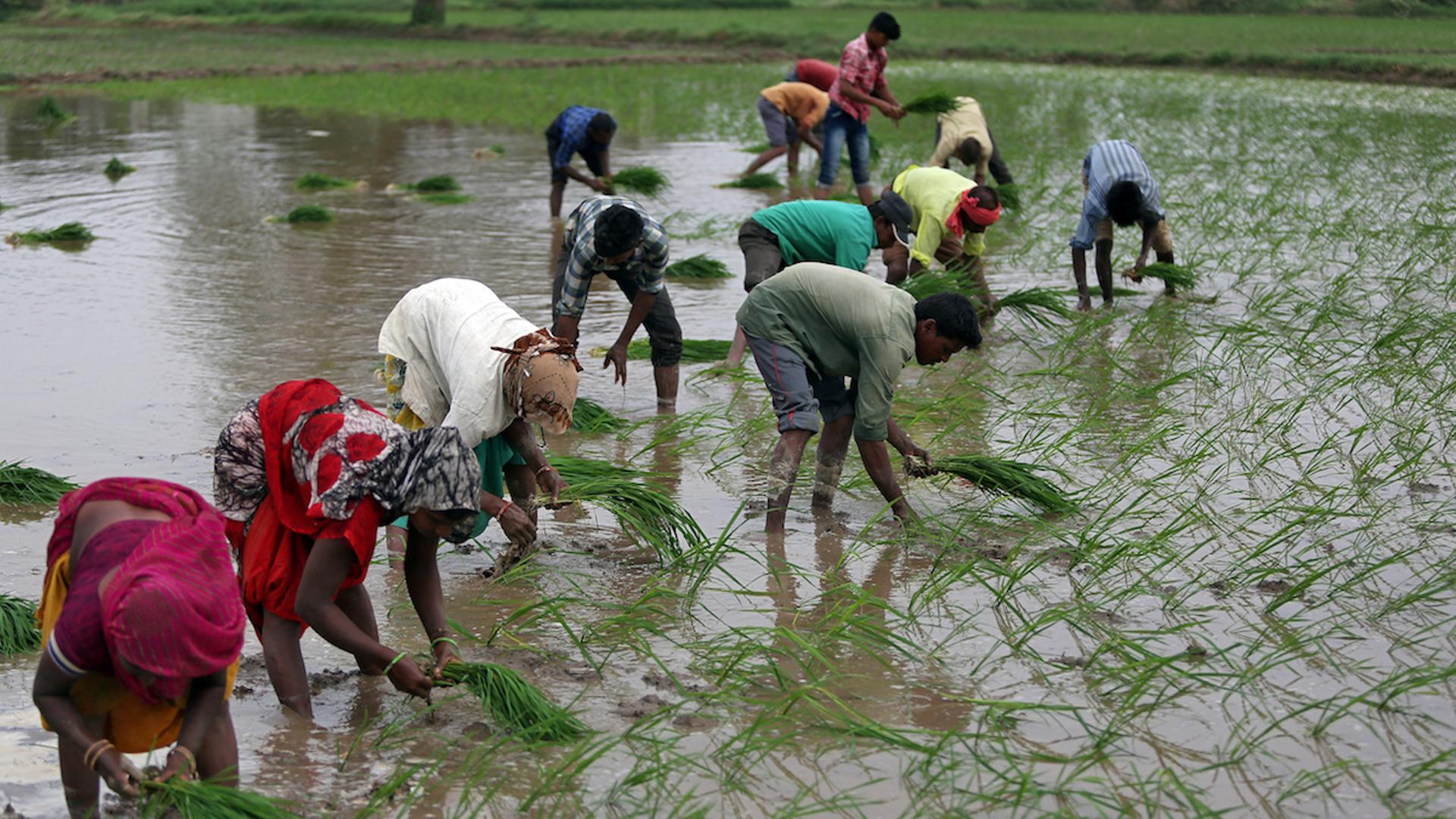Soybean farmers in central India have been seeking compensation from the government after a popular locally developed seed variety has proved unable to withstand the erratic rains and pest attacks that hit the region this monsoon season.
Hundreds of farmers who lost huge swathes of their crops around the state of Madhya Pradesh protested for nearly two weeks in August – some banging metal plates and blowing conch shells, while others set fire to their ruined crops.
As climate change brings more erratic weather – and as popular high-yielding crop varieties prove unable to stand up to climate extremes – such protests are likely to grow around the world, and crop swaps will be necessary, climate experts said.
Santosh Nagar, who for 15 years has grown soybeans on his 8-hectare (20-acre) farm in Hinoti, north of the Madhya Pradesh capital of Bhopal, said his yield has never been as poor as it was this year.
READ MORE:Swarms of desert locusts threaten India’s summer crops
Lost crops
Heavy rains in August combined with a widespread infestation of white fly and stem fly devastated his crop, which his immediate family, his parents and his brother’s family rely on for food and income, he told the Thomson Reuters Foundation.
“We are going through a very difficult time. We’ve lost whatever we had invested,” the farmer said, noting he has seen about $1,360 (100,000 Indian rupees) losses on this harvest and still had to spend to prepare the fields for winter crops.
“Now it will be impossible for us to make ends meet,” he said, as he walked through his fields, surveying the damaged plants.
Hinoti, with a population of about 2,000, has 700 acres of farmland, about 95 percent of it used to grow soybeans, according to government data.
Farmers in different parts of Madhya Pradesh told the Thomson Reuters Foundation they had lost as much as 90 percent of their soybean crop.
Estimates by the Soybean Processors Association of India (SOPA) put the total damage in the state at about 20 percent.
But SOPA’s executive director D.N. Pathak confirmed that heavy rains followed by a burst of hot weather badly affected the crops and created an ideal environment for pests to breed.
The crop losses, on top of the coronavirus pandemic, which has caused job losses and illness, have been particularly devastating for the region’s soybean farmers, he noted.
“The farmers had planted an early-ripening variety of the crop. But this variety cannot withstand adverse climatic conditions and is more prone to pest and disease attack,” Pathak said over the phone.
Fast-growing, but vulnerable
Government figures show Madhya Pradesh, known as the “Soybean State”, produces more than half of India’s soybeans.
Over the past decade, a growing number of farmers in the state have been turning to the early-maturing JS-9560 variety, agricultural experts said.
Developed at the the state’s Jawaharlal Nehru Agricultural University, the crop is ready for harvest in about 90 days, compared with 100 days or more for other varieties.
That means farmers can harvest their soybeans and then plant other crops – such as potatoes, onions and garlic – in the same season, bringing in more income.
But while quick to grow, the variety is less tolerant of pests and extreme weather variations, said Surapaneni Koteshwara Rao, vice chancellor of the state’s Rajmata Vijayaraje Scindia Agricultural University.
After a long dry spell, two bouts of heavy rain hit most areas of Madhya Pradesh in August, each lasting several days, Rao explained.
According to the India Meteorological Department (IMD), this August was the state’s wettest in 44 years.
At the same time, Madhya Pradesh also experienced much warmer-than-normal weather.
Fields became waterlogged, especially in low-lying areas, while humidity caused by the high temperatures encouraged the spread of pests, Rao said.
The early-maturing soybean variety has been a reliable choice for years, he said, but it was no match for this year’s heat and heavy rains.
“New varieties of soybean have been developed, which offer higher yields and would be able to stand up against erratic weather,” he said. “Farmers should adopt those varieties for better results.”
‘Big blow’
The Madhya Pradesh agriculture minister, Kamal Patel, told the Thomson Reuters Foundation that the state government is looking at the possibility of compensating farmers for their lost crops.
“Right now, the damage is being assessed (and) the government is ready to provide all possible help,” he said.
Deepak Nagar, a farmer in Hinoti who participated in the protests in August, said the government needs to help farmers soon, otherwise it will be difficult for their families to get by.
Like many farmers in the state, he lost nearly all of his soybean crop this year.
“This year farmers of the state have only suffered losses. It is a big blow for the state’s farming community,” he lamented, as he plucked a yellowed, dead leaf off one of his soybean plants. ($1 = 73.3940 Indian rupees)
READ MORE: Running out of time: East Africa faces new locust threat










Discussion about this post